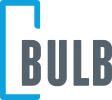Where is automation headed?
Prediction is a dangerous game these days – especially after the events of 2020, yet month after month we see more companies exploring and discovering the benefits of process automation for themselves.
Market-leading analysts like Gartner believe that the future will be marked by new levels of automation designed to make entire workflows more productive and efficient. Elsewhere, executives are learning that even basic automation can be the key to maintaining employee performance, improving the customer experience, and outshining the competition.
While it’s difficult to say with certainty where the future of digitization will take us, we have created this list of automation predictions based on the trends we have observed in this incredible market.
1. Hyper automation Opportunities Emerge
Hyper automation is an exciting concept for companies hoping to improve their workflows in astronomical ways. Since the pandemic, many organizations have been forced to rethink their operations. Technology has emerged to help employees work more efficiently from home, while bots, AI, and IoT tools help human workers manage increased demand.
Gartner believes that the answer to the next level of productivity is hyper automation – a concept that could allow companies to reduce operating costs by up to 30% simply by redesigning essential processes.
Originally, the concept of hyper automation was used in the Industry 4.0 discussion primarily by the manufacturing industry as a method to accelerate supply chain performance. However, companies across all sectors are quickly discovering that automation on a larger scale can be the key to all kinds of innovation.
For example, a customer care suite in the hyper-automation landscape could allow companies to set up step-by-step guided workflows for predictive customer support, preventive maintenance, automated diagnostics and troubleshooting, and more. Imagine how much better the customer experience could be if you had a workflow that addressed everything from service monitoring to diagnostics?
2. The Alignment of Holistic Automation
Hyper automation, low-code applications, and artificial intelligence are forcing companies to think more carefully about how machines, people, and processes are connected in the workflow. There is already a lot of market interest in concepts like machine learning, robotic process automation, and digital twins. Yet we are quickly finding that these concepts cannot deliver the best results if they are kept in silos.
As we move into the future of automation, companies will begin to develop more disciplined approaches to complete end-to-end process visibility. To enable better hyper-automation capabilities, IT teams and business leaders must be able to quickly identify and automate as many processes as possible. This kind of speed requires a flexible, agile environment – especially one in the cloud.
In the future, more and more companies will use a cloud environment for end-to-end solutions designed for speed, adaptability, and a better overall experience. IDC has already predicted that about 30% of cities will use a combination of AI, IoT, digital twins, and automation to merge physical and digital environments and improve remote infrastructure management.
3. Intelligent Process Orchestration
A holistic approach to automation means taking an in-depth look at end-to-end processes. Only when companies look at the big picture can they optimize business performance to deliver a better experience for customers and employees. Unfortunately, it’s not always easy for companies new to automation to identify where the best opportunities lie.
With this in mind, it is likely that artificial intelligence will prove to be a tool that helps identify opportunities for better efficiency and digital transformation. AI solutions will enable companies to leverage vast amounts of data from different environments to make smarter business decisions. AI solutions can instantly identify common trends in productivity and efficiency losses and show businesses where new opportunities for automation lie.
For example, a service performance dashboard with built-in automation could show a business that it can reduce the risk of service outages by automating a workflow to deploy new maintenance patches and upgrades at a time when customers are not actively using the system. This avoids unplanned downtime for businesses while ensuring that customers continue to receive the same quality of service they expect.

4. Humans and Machines Work Together
Perhaps the most common concern of business leaders interested in automation technology is that too much innovation could cause companies to abandon the human workforce. The reality, however, is that most automated solutions are designed to complement and empower the humans already present in a professional environment.
For example, if companies have an automated system that immediately provides them with a troubleshooting tool in the event of an outage, that does not make human labor obsolete. Even if a customer can find the root cause of a problem themselves and an AI solution can be implemented with the click of a mouse, it just means that a human employee has more time to focus on other problems that were not amenable to AI management.
As powerful as intelligent diagnostics and automated systems can be, they work best when accompanied by creative, empathetic humans in the modern workplace. Look at the modern chatbot environment, for example. Chatbots can allow customers to search for answers to common questions by automatically displaying information on a specific keyword or topic. However, when a customer needs an empathetic ear or a creative solution to a complex problem, they are still looking for human assistance.
5. A More Empowered Workforce
Gartner’s predictions about the future of work say that anything that can be automated in the enterprise landscape should be automated to achieve peak performance. This would mean that up to 80% of the processes that are done by humans today, from information search to data entry, should be automated. This could lead to a new future where employees have more meaningful jobs and feel more capable of doing the right work.
One of the things automation can do for the modern workforce is to ensure that everyone has access to the right information at the right time. Forrester predicts that new forms of automation will support one in four field workers either directly or indirectly by the end of 2021. The analysts also predict that many companies will invest in hardware, machine learning, and AI advances to replace tasks that previously required office presence.
IDC predicts that automation and AI solutions will support the modern workforce like never by next year – particularly through access to new volumes of data. Some 65% of CIOs are looking to transform their workforce with access to better AI, data, automation, and security strategies to increase productivity and decision-making in a rapidly changing world. IDC predicts that in the next 2 years, about 50% of knowledge workers will be working together with their own robotic assistant, which they can use to automate a range of tasks on a daily basis.
6. The Push to Reduce Complexity
IT has evolved faster in recent years than ever before, raising the question of who will have access to the highest level of automation technology and solutions. Access to specialists with a high level of coding and development skills is no longer as great as it once was. Many experts predict that the future of technology will lie in reducing complexity and minimizing barriers to entry for automation projects.
Low-code concepts will come to the fore from 2021 onwards. Forrester predicts that about 75% of development platforms will offer a low-code option. The low-code landscape enables agile and rapid development in an ever-changing environment. In the future, it is likely that digital leaders seeking a future of automation will adopt this low-code approach.
Tomorrow’s innovators will use a mix of remote process automation, low-code, and integration technology to improve the employee and customer experience to a new level while opening the door to greater agility and scalability. With citizen development opportunities on the horizon, everyone will have a say in what the future of automation looks like.
What’s Next in Automation?
It is impossible to know with certainty where the automation landscape will take us next.
What we do know now is that, at Bulb technologies, we have what it takes to meet a wide range of automation needs. If you want to take your first steps into the future of automation, contact the Bulb Tech team today.
Contact us and start your automation journey today
Our products and solutions are here to help you



